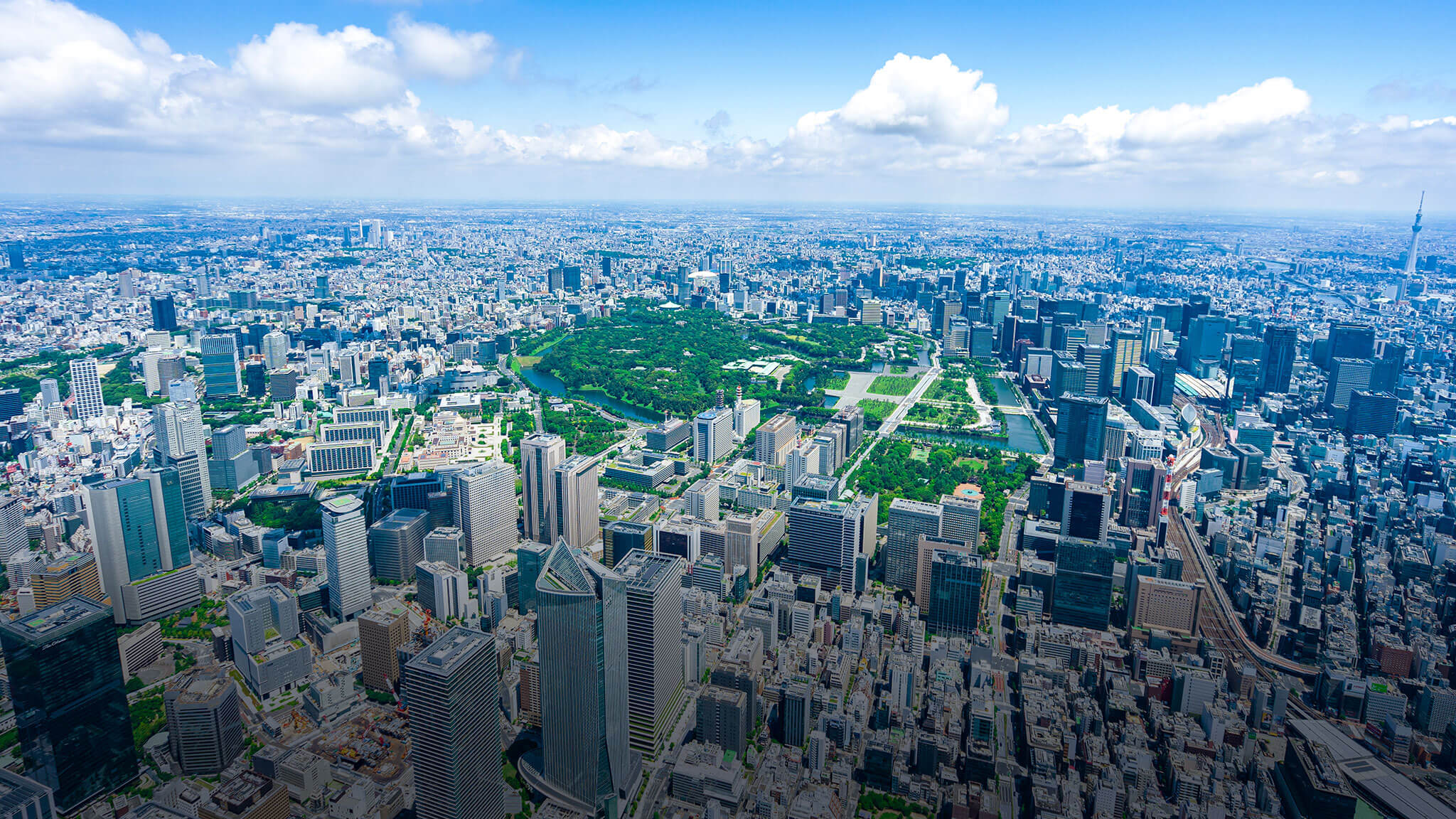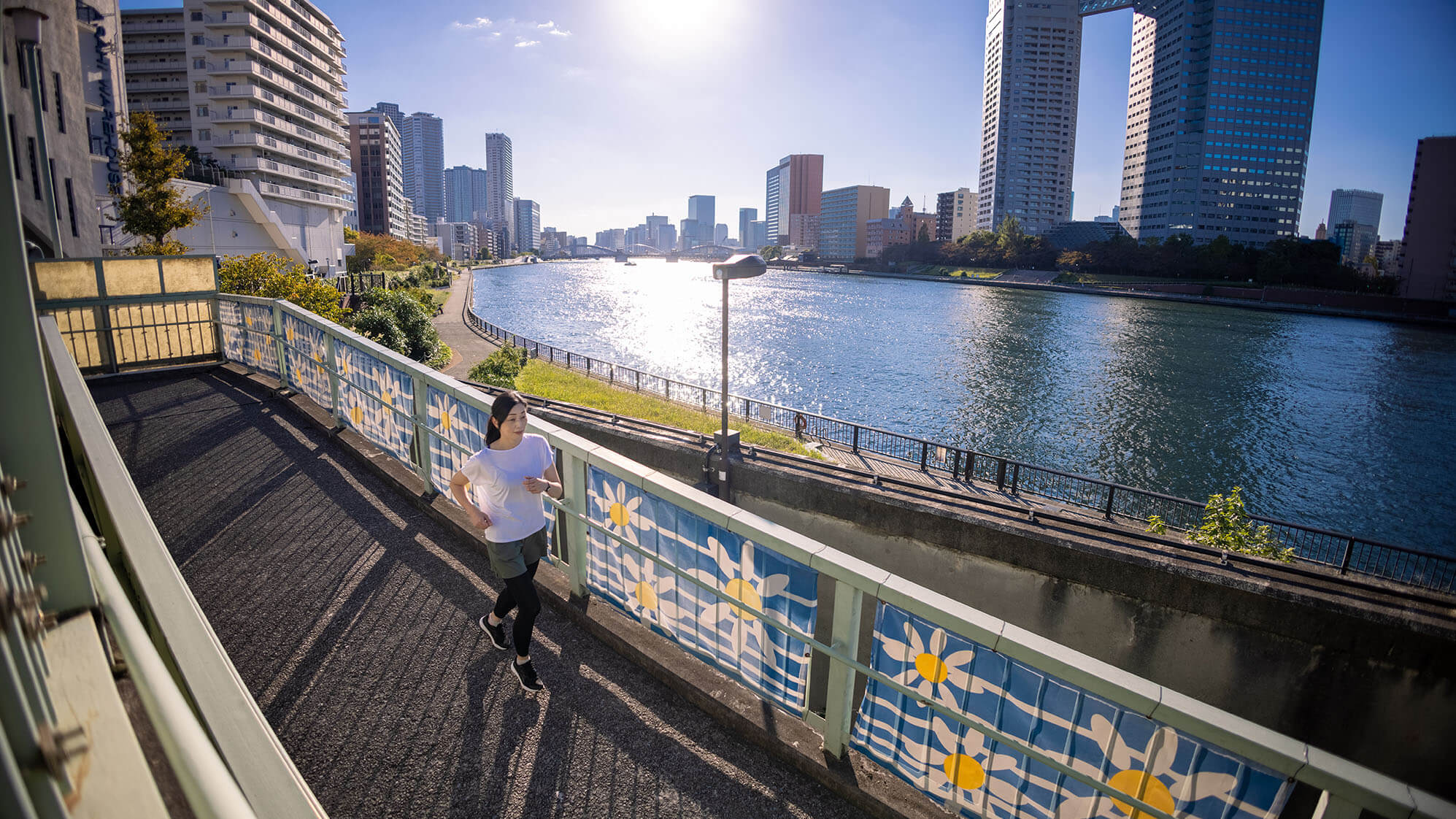
Tokyo’s Green Evolution
A 100-year vision to sustainable urban living in a global city of
The Global Context
In a world where city governments have to navigate an array of global challenges, from natural disasters to human-induced risks, the call for resilient and sustainable solutions has never been more urgent.
In response, cities are embracing paradigms such as green infrastructure, an ecosystem-based approach to urban development that leverages natural, semi-natural and human-made structures and increases harmony between them.
Under this emerging paradigm, gray infrastructure—from roads and railways to tunnels and pipes to walkways—are developed and enhanced with green infrastructure in mind, including seafronts, rivers, forests, and parks.

So it comes as no surprise that cities such as New York, Paris and London—not to mention Tokyo—are embracing this growing movement in urban development, and are deploying strategies for its realization.
Tokyo, under the auspices of the Tokyo Metropolitan Government (TMG), has not only embraced green infrastructure, but is looking to be a leader. That is why the TMG launched the Tokyo Green Biz project, and is promoting it across the city.
Leading a Century of Change
Launched by the TMG in 2023, the Tokyo Green Biz project is a 100-year initiative that aspires to promote green infrastructure, including creating and conserving greenery at every turn in the city—while learning from the past to shape the future.
The project aims to amplify the significance of green spaces to enhance and enrich people’s lives, and—working alongside urban residents—actively foster collaborative initiatives to safeguard greenery.

Tokyo Green Biz has three areas of focus: Protect, Cultivate, and, Utilize. Under the Protect pillar, the TMG is enhancing support for municipalities to safeguard precious local green spaces, including residential forests.
Meanwhile, the Cultivate pillar will see the creation of Tokyo Green Biz Map, an interactive online platform which will facilitate information sharing between the TMG and its residents, fostering opportunities for everyone to become more engaged with greenery and enjoy its cultivation.
Furthermore, the Utilize initiative focuses on promoting green infrastructure, including implementing measures against heavy rainfall, such as underground rainwater storage, and combating extreme heat with strategies like using greenery to cool down summer temperatures.
Preserving and Protecting Greenery
More than just preserving trees for posterity, plans under the Tokyo Green Biz project have seen green infrastructure expand across the city via rooftop greening, water-friendly seawalls and leveraging nature itself to enhance water retention capacity.
Thus far, 2.72 million square meters (29.27 million square feet) of rooftop gardens have been built, creating opportunities for citizens to interact with nature from their own homes.
Importantly, green infrastructure development not only expands access to greenery, but also increases the city’s disaster preparedness and creates sustainable living environments.

A Collaborative Journey
Previous to the Tokyo Green Biz project, the TMG launched a number of initiatives aligned with sustainable living with projects to develop urban parks and tracts of land part of those endeavors. These include initiatives to protect satoyama (or underdeveloped woodland near a populated area), preserve urban forests, and conserve the Tama River and water resources have been important elements of that strategy.
In part due to such efforts, urban parks and tracts of land expanded from around 1,500 hectares (ha) in 2005 to 2,063 ha in 2023 for a total of 84 metropolitan parks and green spaces. Plans are in place to expand this area to 2,168 ha by 2030.
The TMG’s commitment to biodiversity and green connectivity extends to marine parks, conservation areas and ecological networks. Marine parks, such as Australia’s Great Barrier Reef Marine Park, are known as havens of biodiversity.

Tokyo has maintained a variety of marine parks where visitors can experience water destinations, such as seafronts, as well as green spaces. In 2018 the Kasai Marine Park—a globally recognized tidal flat that is also home to a seabird sanctuary—became the first wetland in Tokyo to be registered under the Ramsar Convention for its international importance.
Another example is the Umi-no-Mori (Sea Forest) Project, in which tree saplings purchased with donations from citizens and private companies were planted in a 30-meter-high (98 ft) pile of waste and recycled resources to transform the reclamation area into a forest. In the eight years between 2008 and 2015, approximately 240,000 saplings were planted.


Elsewhere in the city, collaborative initiatives with stakeholders in the private sector as well as communities involve reimagining urban areas as locations for green, walkable spaces where nature and humanity can coexist harmoniously.
The Marunouchi Urban Terrace, for example, is an urban development initiative that brings tree-lined walkways, outdoor seating and pedestrian-friendly, open spaces to the heart of one of Tokyo’s busiest business districts.
Other efforts to renew the city-scape include the Azabudai Hills development, which deployed extensive greening and created expansive areas where nature and humanity stand shoulder to shoulder. Plans are also underway to transform a disused expressway in the urban center into a green promenade with the Tokyo Sky Corridor project.
That is in part why recent, large-scale developments in central Tokyo—including Minato Ward, where Azabudai Hills is located—have resulted in 60,000 square meters of new greenery in the city.
Building Sustainable Communities
In addition to greening initiatives, the TMG’s Green Biz vision involves active engagement with citizens—a desire to place ‘the power of the people’ in the foreground.
To this end, Tokyo has launched a variety of funds—to promote efforts such as tree planting and flower planting—based on donations provided by, and in collaboration with, local communities.
The Tokyo Metropolitan Greening Fund, for example, supports volunteers who are engaged in activities (aside from greening and planting) in Tokyo Metropolitan Parks, such as pond cleaning and working as park guides.

The TMG is also actively facilitating dialogue with stakeholders where experts from industry and academia exchange views on such topics as urban development, ecology and the environment.
The upshot of the Tokyo Green Biz project and related initiatives is that an opportunity has emerged not just to paint a 100-year vision for Tokyo, but also to engage deeply in a sustainable evolution that has stakeholders at the core.
“Under the banner of Green Biz, we will continue to work together with the citizens of Tokyo to protect Tokyo’s greenery and promote the creation of a city where people can live with greenery and look ahead to the next 100 years.”
Through the Tokyo Green Biz project, various initiatives and collaborations with stakeholders are paving the way for a future where nature, people, and community are interconnected, passing on a green and sustainable urban environment for generations to come.








